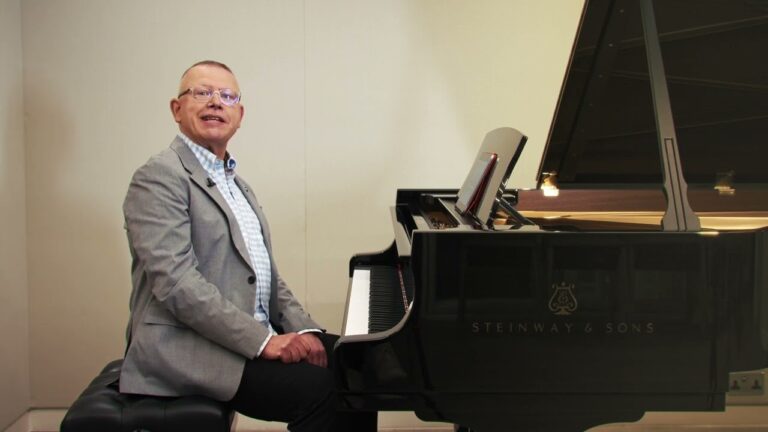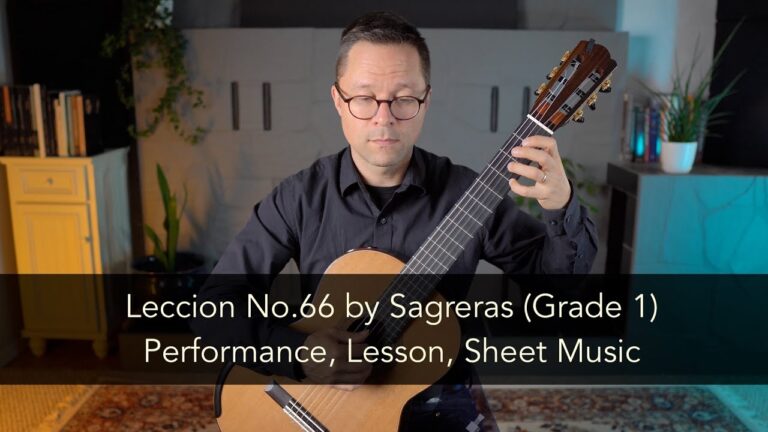This lesson comes from my Method Book Volume 2.
Below is the lesson for C Major (Page 7) including the scales and chord progressions. The lesson for the Menuet by Rameau (Page 8) starts 6:30 mins. The lesson for Vals by Carulli on (Page 9) starts at 7:25. Be sure to watch the whole video straight through to get an overview and to not miss any info.
Below is a recording of the duet with my friend Natasha Pashchenko as well as the chord song Morning Has Broken (Page 10). Please note that the updated version of my book does not use slurs in the Menuet so disregard the slurs and follow the above lesson for your practicing. If you are playing the duet without a teacher just play the top line on its own.





Hello again Bradford.
I’ve just come back to this after a few months of piano.
Getting back into it little by little.
Gone back to the start of the book I bought and straight away I notice your fingering for first position G chord. I’ve never seen that before, using 234. I tried it and find it impossible. I can only use 123. I have in the past put 3 on the D and 4 on the G, but my ears can’t tell the difference.
Is there a reason for your suggested fingering? Should I persevere with it?
Cheers.
Paul.
Hi, when strumming chord songs etc using the fingerings 3-2-1 for G is fine. However, many classical guitar works later on will require the 3-2-4 fingering because melody might be on the upper strings. So just ease into it slowly, don’t stress over it. Start with just grabbing the lower string notes and practice just touching that upper string. Keep in mind the issue usually has to do with guitar position and posture.
Hi
Can I ask please, on the C Majior scale, I understood the mechanism of descending a scale with ” Sticky fingers” , never leave the previous note. But on ascending scale , where you have open string, you are obligate to leave the string to play the next . I will try to explain better : if you are on C Major and you are getting back to the C from bottom, you play for example A then to play G , you need to leave the note A otherwise you can’t play G. Instead in your video looks like , your fingers never leave the string, ” like spider” or “like sticky finger”. Do you by chance, put your finger on the next string (on ascending scale) before to play it or no ? Thanks
Ok, just to clear one thing up. When we say Ascending it should indicate going up in pitch and descending will be going down in pitch. So nothing to do with the direction of the floor or ceiling in relation to the guitar. So during an ascending scale feel free to leave your fingers down until the next note/string. Descending you’ll have to let go. The main thing is to listen for legato connection between each note. Don’t worry too much about the fingering issue, as long as each note sustains until you hear the next note you’ll be fine!
Hi,
I bought your books, can I ask please if in this piece by Carulli, I have to apply the “Muting” technique or not? If the answer is yes , how I can understand in which points of sheet music, I have to apply it, because the score does not say anything. While if the answer is no, then how I can understand in which scores I have to apply it and in which points, because no score says where and when to apply muting. The problem that I have realized , from some performances, the muting technique is essential . Otherwise, the guitar looks like an orchestra, so I would like to understand when and where to apply it.Thanks
I don’t introduce muting until around my grade 2 or 3 book. I would wait until then to tackle it as you’ll want to commit other techniques to muscle memory before multitasking with muting. It’s just a little too intense for this level.
And straight from learning the C major scale I can play unchained melody from the Righteous Brothers…☺️